HONOLULU — The Bishop Museum hosted a special tour of the Hornbostel Collection for some members of the CNMI delegation to the Festival of Pacific Arts and Culture on Monday, June 10.
The Hornbostel Collection comprises over 10,000 artifacts from the Marianas or the Caroline Islands.
CNMI delegation members were able to see and handle a variety of stone tools, pottery shards and other artifacts from Saipan, Tinian, Rota and Guam.
The special display included dozens of slingstones, adze heads, stone sinkers, a “sinahi” necklace, multiple mortars and pestles and a grinding stone.
Of note were two pottery samples: one featured a carving of humans while the other depicted geometric designs.
After their special tour, the CNMI delegation was asked to contribute to the museum’s Living Cultures Project, a program that collects the perspective of indigenous peoples as a means of enrichening the museum’s understanding of artifacts.
Participants were asked to share a reflection of what the collection meant to them.
Sarah Kuaiwa, the curator for Hawai’i and Pacific cultural resources at Bishop Museum, told Variety that there have been calls to return the Hornbostel Collection to the Marianas.
CNMI delegation member Erlinda Naputi, who is also Joeten-Kiyu Public Library’s director, said there is “good and bad” in having the Hornbostel Collection in Hawaii. She said the Bishop Museum has resources and expertise that allow the pieces in the collection to remain preserved. She said there is also a large population of Chamorros in Hawaii that could benefit from visiting the collection at the Bishop Museum.
However, she said the collection was “taken away from home” and the people of the Marianas deserve to see the collection that originated from their islands.
She describes feeling “at peace” when she was able to interact with the artifacts, which she described as amazing.
Bobby Cruz, board vice chair of the Northern Marianas Humanities Council, said he was “deeply emotional.”
“As I wore gloves to examine the artifacts, I felt anger learning how these items were removed from the Marianas. One [artifact] that stood out to me was a stone with ancient pictographs chiseled out from one of our caves. The fact that someone could literally remove something so important and send it off island without the permission of the indigenous people was baffling to me,” he said.
He added that he felt “immense pride” in his heritage.
“Each artifact tells a story of our people’s ingenuity and creativity,” he said.
“I look forward to the continued work with the Bishop Museum to be able to deepen our understanding of the collection, and I’m hopeful that the eventual name will reflect the actual story behind the removal of the items from our homeland and also how the research work will give us different insights into our past,” Cruz said.
Kuaiwa said the museum’s board of directors makes the decision concerning the repatriation of items. She said no formal request from Guam or the CNMI has been made for repatriation.
“That’s the hope of a lot of people, that [the Hornbostel Collection] returns back to the homeland,” she said. “Our role is to continue to hear and listen to the people and stakeholders, community members and members of the diaspora who are calling for the return of these pieces.”
For more information about the Hornbostel Collection, go to https://www.guampedia.com/gertrude-and-hans-hornbostel/.
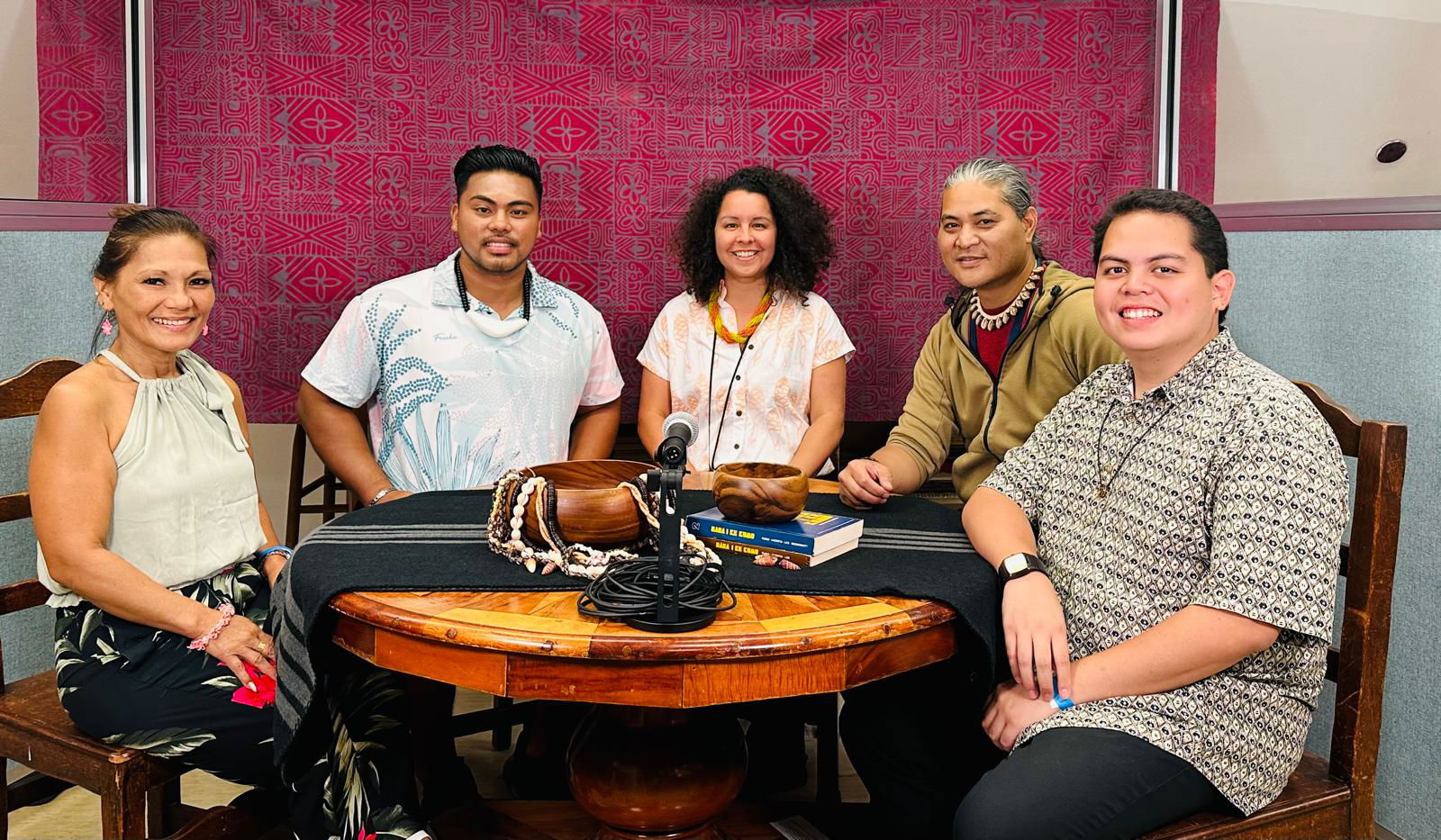
From left, Patty Cruz, Bobby Cruz, Lenny Leon and Thomas Manglona shared their perspectives with the Bishop Museum’s Living Cultures Project in Honolulu, Hawaii. Also in photo is Healoha Johnston, center, cultural resources director of the Bishop Museum.
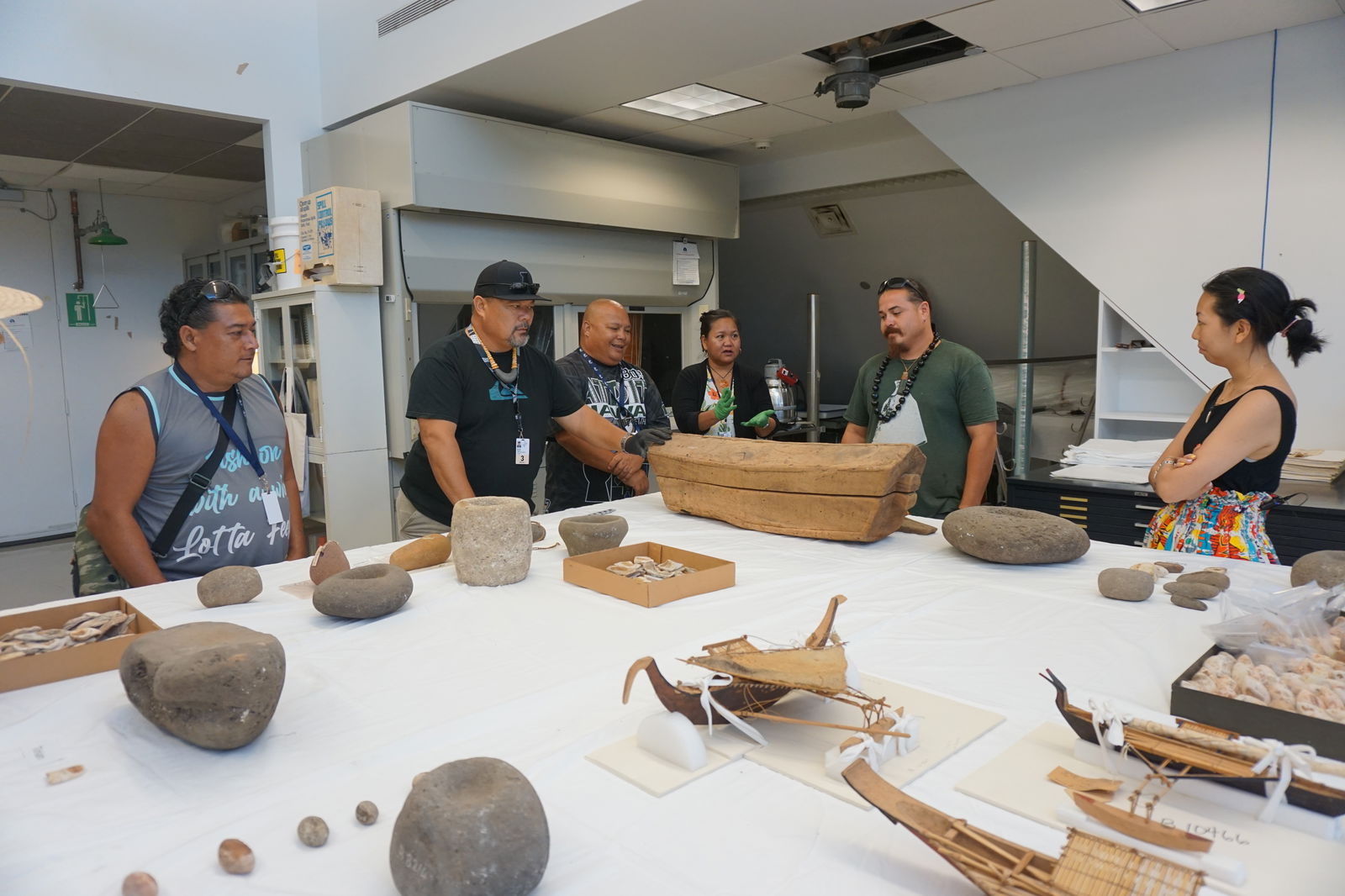
From left, Jason Aldan, Martin Naputi, Jack V. Diaz, Erlinda Naputi, Tyler Warwick, and Sarah Kuaiwa examine a wooden box from Yap that is part of the Hornbostel Collection. Around them are numerous stone artifacts and other items in the collection at the Bishop Museum.

This latte stone came from Rota. CNMI delegation members gathered around it for a photo. Sarah Kuaiwa of the Bishop Museum said there has been no formal request from the CNMI to repatriate the latte to the Northern Marianas.

Tyler Warwick, Eva Cruz, and Martin Naputi examine Marianas artifacts that are part of the Hornbostel Collection.
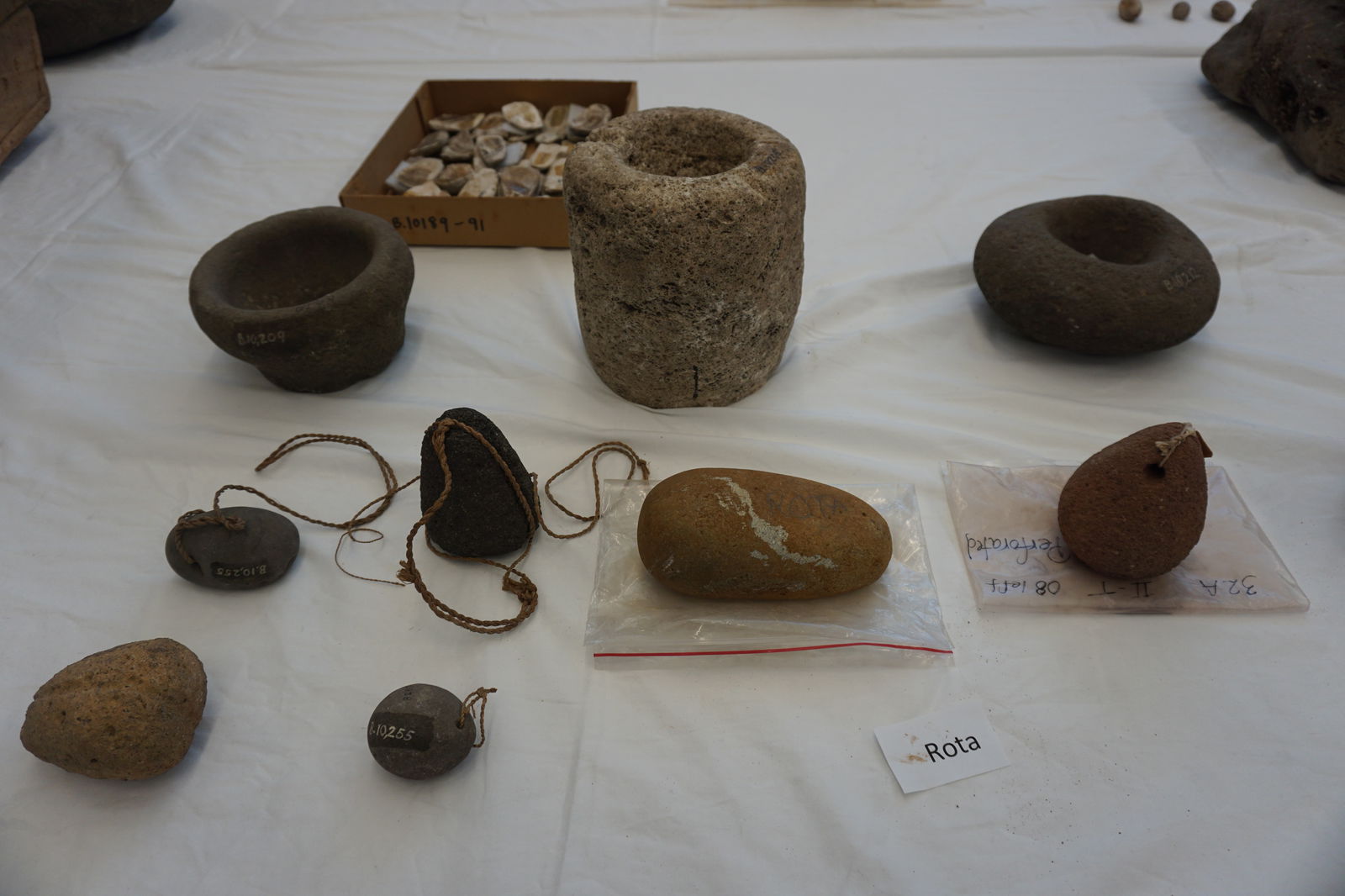
Upper row, a few stone mortars. Second and third row, stone sinkers. These artifacts were all taken from Rota.
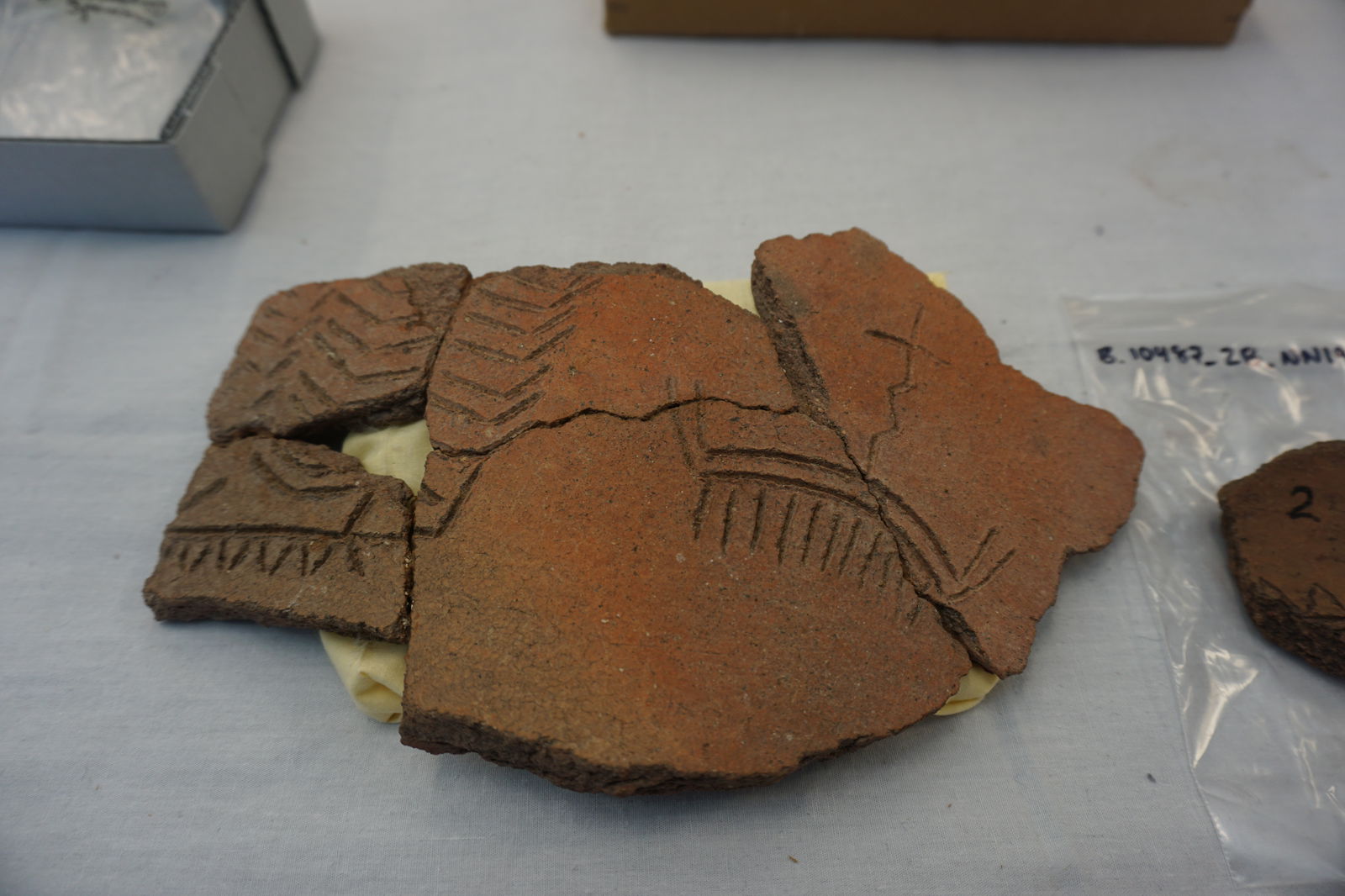
These pottery shards from Guam display unique etchings.
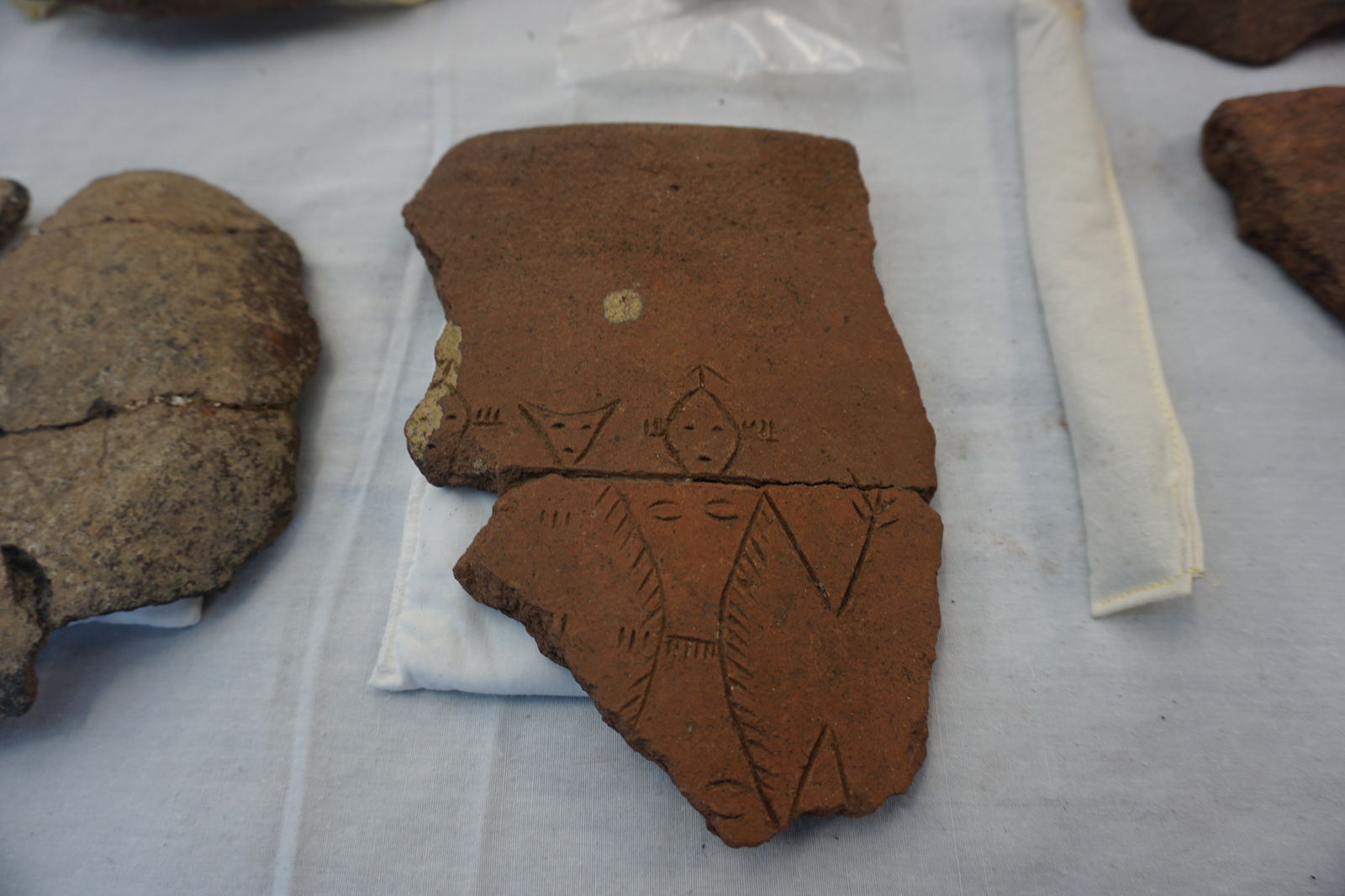
Human figures are depicted on a pottery shard in the Hornbostel Collection

Dozens of slingstones lie in a box
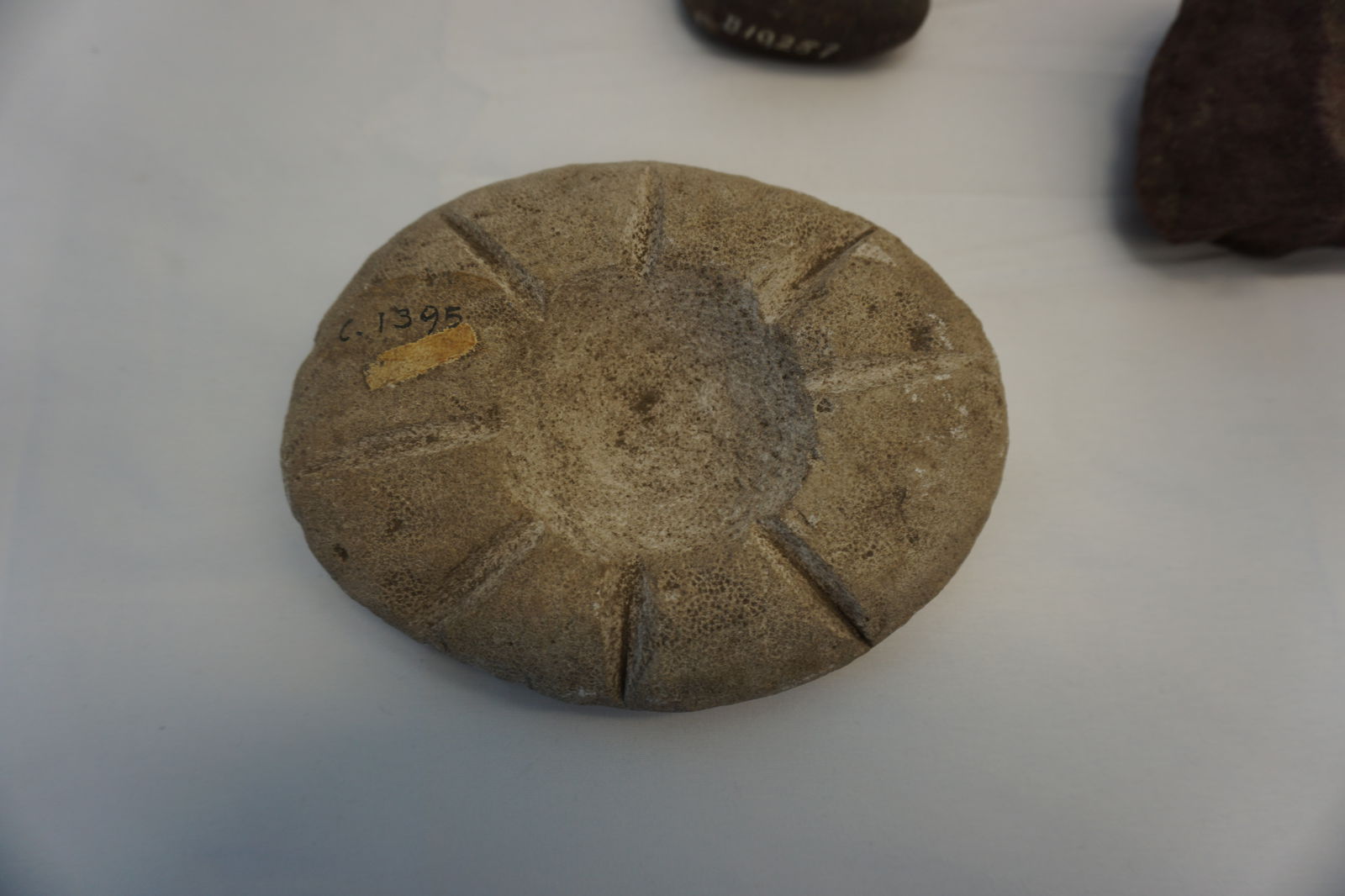
A unique mortar.











